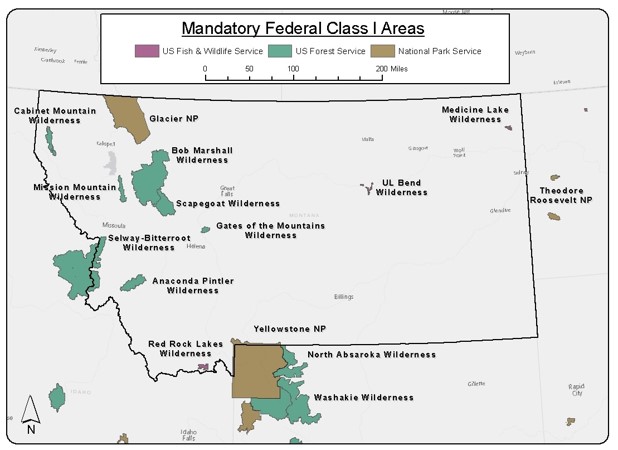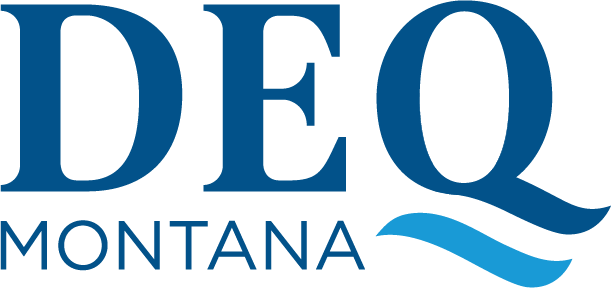Program Overview
The Analysis and Planning Section is responsible for developing comprehensive plans, also known as State Implementation Plans (SIPs), to reduce air pollution and developing rules that set requirements on air emissions for both individuals and industry in Montana.
As part of the ongoing efforts to develop a successful State Plan for compliance with the new federal methane rule NSPS 40 CFR 60, Subpart OOOOc, outreach is being conducted to gather essential information from oil and natural gas operators. Input from operators is invaluable in shaping Montana’s approach and ensuring that the State Plan aligns with both federal regulations and the needs of the industry.
This survey is designed to collect data specific to facilities/equipment that are subject to new methane emissions requirements. The insights you provide will help us assess current practices, identify potential challenges, and develop support mechanisms to facilitate compliance.
Important Note: Do not report facilities located on tribal lands. All facilities on tribal lands are regulated by the Environmental Protection Agency (EPA) and not subject to the Montana State Plan.
What to Expect:
- The survey will cover various aspects of your facility’s operations, including a full facility/site quantity count of all designated sources for facilities that commenced construction, modification, or reconstruction on or before December 6, 2022.
- The information you provide will used for the purpose of State Plan development and regulatory compliance.
- Oil & Gas Facility Methane Emission Sources Questionnaire
- Please complete the survey within 30 days, by October 28th, 2024.
- If you prefer, paper copies are also available upon request.
- FAQ's
For further information, questions, or if an extension is needed, please contact Taelyn Ehlke, Air Quality Planner with DEQ at (406) 444-2467 or taelyn.ehlke@mt.gov.
EPA Region 8 Approved SIPs
Although the 1990 Clean Air Act (Act) is a federal law covering the entire nation, state and local air pollution control agencies (Agency) do much of the work to fulfill the requirements of the Act. For example, an Agency would hold a local hearing on a permit application by a power or chemical plant or take the lead in assessing a penalty to a company for violating an air pollution standard. Additionally, an Agency would develop community air pollution control programs to address automobile emissions, outdoor burning, road dust, or similar sources of air pollution.
Under the Act, the U.S. Environmental Protection Agency (EPA) sets Standards for air pollutants. These Standards ensure that all Americans have the same basic level of health and environmental protection. EPA makes regulations to control sources of air pollution. The Act allows Agencies to adopt and enforce more protective air pollution regulations than EPA. However, Agencies are not allowed to have weaker air pollution regulations than those established by EPA.
Because air pollution control problems often require special understanding of such factors as local industries, geography, housing patterns, and economic constraints, Agencies are better suited to regulate sources of air pollution than EPA. The Act recognizes this fact and confers upon Agencies the primary responsibility for assuring that air pollution never exceeds the Standards.
Agencies develop and maintain air pollution control plans frequently referred to as State Implementation Plans, or 'SIPs'. These control plans explain how an Agency will protect against air pollution under the Act. When referring to a state's SIP in general, it is defined as the collection of programs, policies and rules that Agencies use to attain and maintain the primary and secondary National Ambient Air Quality Standards (Standards). EPA must approve each SIP, and if a SIP fails in some way to protect the Standards, EPA may reject an Agency's SIP and assume administration of any specific portion of the Act in that state and/or develop its own implementation plan for the state.
Nonattainment Area Maps: Note: use the zoom function to improve readability. Large files may take time to download and open
- Libby1.31MB
- Butte - 738 KB
- Columbia Falls - Falls 476 KB
- Kalispell - 621 KB
- Libby - 515 KB
- Missoula - 937 KB
- Thompson Falls - 445 KB
- Whitefish - 543 KB
- Billings - 925 KB
- Great Falls - 612 KB
- Kalispell - 582 KB
- Missoula - 899 KB
- East Helena - 503 KB
- Billings - 953 KB (area of concern not legally designated as nonattainment area)
- East Helena - 512 KB
- Laurel - 882 KB
| Community | Pollutant | Non-Attainment | Attainment/Unclassified | SIP Call** |
|---|---|---|---|---|
| Laurel | Sulfur Dioxide | X | ||
| East Helena | Sulfur Dioxide | X | ||
| Billings | Sulfur Dioxide | X | ||
| Billings | Carbon Monoxide | X | ||
| Great Falls | Carbon Monoxide | X | ||
| Missoula | Carbon Monoxide | X | ||
| Kalispell | Carbon Monoxide | X | ||
| East Helena | Lead | X | ||
| Kalispell | Particulate (PM-10) | x | ||
| Columbia Falls | Particulate (PM-10) | x | ||
| Whitefish | Particulate (PM-10) | x | ||
| Libby | Particulate (PM-10) | x | ||
| Libby | Particulate (PM-2.5) | x | ||
| Missoula | Particulate (PM-10) | x | ||
| Thompson Falls | Particulate (PM-10) | x | ||
| Butte | Particulate (PM-10) | x |
Montana Code Annotated - Title 75. Environmental Protection - list of chapters
Clean Air Act of Montana, Title 75 Environmental Protection, Chapter 2 Air Quality
- Air Quality, Title 75, Chapter 2, Parts 1 through 4
- Asbestos Control, Title 75, Chapter 2, Part 5
Administrative Rules of Montana - Title 17
Administrative Rulemaking Notices
- ARM Title 17, Chapter 8, Air Quality
- ARM Title 17, Chapter 74, Subchapters 3 and 4, Asbestos Control
- ARM Title 17, Chapter 80, Air and Water Quality - Tax Certification
Regional Haze

The goal of visibility protection is to ensure that the number days with impaired visibility at Class I areas are declining over time, and to make sure the clearest days at Class I areas stay clear and don't degrade. The U.S. Environmental Protection Agency (EPA) published a set of regulations in the late-1990s that aim to reduce the amount of visibility-impairing particles in the air over time. This set of regulations is called the Regional Haze Rule (RHR). The RHR calls for state and federal agencies to work together to improve visibility in Mandatory Class I Federal Areas.
The RHR sets a goal of reducing haze in each Class I Area to a level that is considered natural, meaning no particles from man-made sources are contributing to haze, by the year 2064.
In order to track changes in visibility, EPA set a starting point, or baseline - the level of visibility in the years 2000-2004 - against which visibility improvements are measured. The regulations require gradual improvements in visibility over time such that each Class I Area will achieve its calculated natural visibility goal by the year 2064.
These projected improvements form a straight line, what is often referred to as a “glide path,” between the 2000-2004 baseline period and the 2064 natural conditions. Due to the unique conditions in different parts of the country, each Class I Area has a different baseline and a different estimate of natural visibility conditions.
Actions that Reduce Haze
To improve visibility, often states look to control emissions of the pollutants that contribute to haze. As described above, the particles that cause haze come from a wide variety of places. Reducing haze means reducing the total amount of particulate matter being emitted or formed in the air.
The RHR directed states to develop and implement plans to reduce particulate pollution. These plans are expected to contain specific control measures for emission sources that were determined to be causing or contributing to haze in Class I Areas.
Such measures might take the form of direct limits on the amount of emissions allowed from a particular source. For example, a manufacturing facility might be required to reduce its total tons of nitrogen dioxide (NOx) emissions. The facility could achieve the limit in a number of ways, including installing new technology designed to remove NOx. Pollution control technologies are always advancing and improving due to continual research and pressure from industries that need to comply with control measures or regulations.
Other control measures may take the form of state or federal regulations that contribute to a general reduction of haze-causing pollutants across an entire sector. For example, when EPA revises a National Ambient Air Quality Standard, many facilities across the country must evaluate how best to reduce their emissions. Another such example is federal standards for automobile fuel efficiency. These fuel efficiency standards contribute to decreasing NOx emissions from cars and trucks.
Emission reductions can also come in the form of source shutdowns and retirements, as industries decline and sources reach the end of their lifespan.
Montana Regional Haze SIP - Second Planning Period
On August 10, 2022, Montana submitted its Regional Haze State Implementation Plan (SIP) for the Second Planning Period to the EPA. This plan fulfills the requirements of the Regional Haze Rule (40 CFR Part 51, Subpart P) by establishing long-term strategies to achieve the 2028 reasonable progress goals. In addition, this plan demonstrates Montana is on track to meet the national goal of natural visibility conditions in all mandatory Class I areas by 2064.
Montana 2nd Planning Period Regional Haze SIP
Appendices A-E
Appendices F-G
Appendices H-I
Montana's 2017 Progress Report
Montana submitted a progress report to the EPA in 2017. This document evaluates visibility progress in Montana since the baseline years of 2000-2004 and, more specifically, progress since the Montana FIP was published in 2012. It provides a 5-year update on the current status of visibility at the Class I Areas affected by emissions from Montana sources of air pollution
2012 Regional Haze FIP
For a variety of reasons, including available staff time and the cost of performing the required technical analyses, Montana told EPA the state would not submit a plan to comply with the rule. As a result, EPA published a Federal Implementation Plan or "FIP" for Montana in 2012.
Upcoming Activities
There are no upcoming Regional Haze activities at this time.
Plan and Rule Development Contacts
Planning - Administrative Rules and State Implementation Plan
(406) 444-9741
Meteorological Services & Smoke Forecasting
(406) 444-0283
Main line
(406) 444-3490
